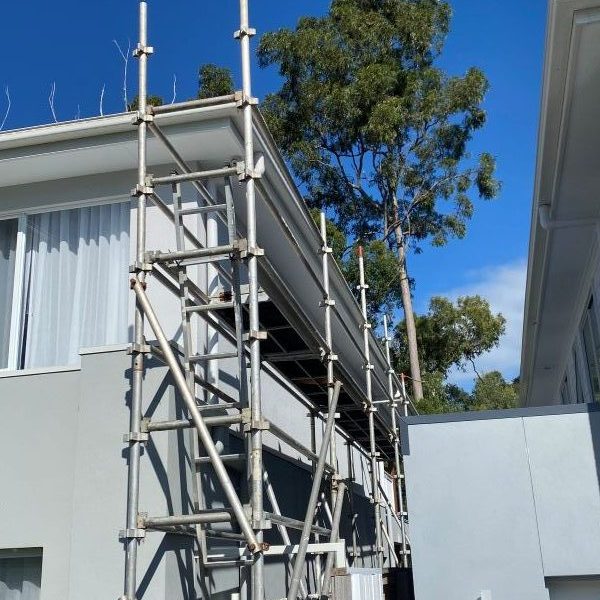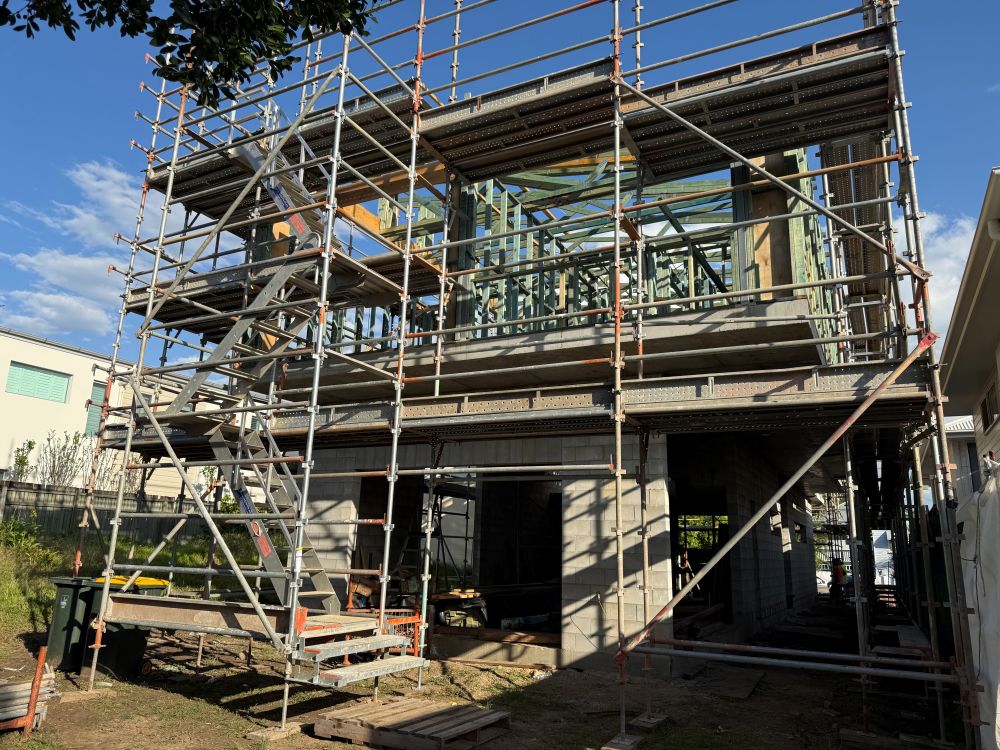Enhancing Safety and Compliance: A Comprehensive Guide to Scaffold Load Capacity in Construction
The concept of scaffold load capacity is fundamentally important, representing the maximum weight that a scaffold can safely sustain during various construction activities. This critical aspect encompasses three major categories of loads that require meticulous evaluation:
- The weight of the scaffold itself, commonly referred to as the dead load, which includes all structural elements
- The weight of workers, along with tools and materials situated on the scaffold platform, known as the live load that varies with each project
- External forces such as wind, rain, or vibrations impacting the scaffold, classified as environmental load, which can significantly affect stability
Grasping these load categories is vital, as they directly affect the overall stress placed on a scaffold throughout its operational usage. Adhering to these calculations is not only advisable but also a legal obligation under Australian law, ensuring the safety of all personnel involved in construction activities.

Maximise Efficiency: A Step-by-Step Guide to Using Our Scaffold Load and Height Calculator
Although a universal formula does not cater to the various scaffold configurations, our scaffold calculator serves as an intuitive tool that offers precise estimates by simplifying the essential variables involved. This tool is specifically designed for residential builders, homeowners, and scaffold hire professionals who adhere to the guidelines outlined by the Australian OHS standards.
Step 1: Identify the Type of Work Being Carried Out
Begin by determining the nature of the work, which may encompass tasks such as roof restoration, exterior painting, solar panel installation, cladding, or rendering, each requiring different scaffold configurations and load capacities.
Step 2: Specify the Number of Workers Involved
For example, you may input two workers who will be working simultaneously on the scaffold platform, ensuring that the load calculations account for their combined weight and any tools they will use.
Step 3: Estimate the Weight of Materials to Be Used
This might involve calculating approximately 120 kg worth of rendering materials or tools that will be utilised throughout the project, as this weight significantly impacts the overall load capacity.
Step 4: Enter the Height of the Scaffold Platform
For instance, you could set the height at 4.5 metres above ground level, which is crucial for determining safety features and compliance with regulations.
Upon entering this information, the calculator generates a recommended scaffold configuration that includes:
- The appropriate duty class (e.g., Light, Medium, or Heavy) based on the load requirements
- An estimation of the Safe Working Load (SWL) per bay, which is critical for safety
- The recommended scaffold type (e.g., aluminium tower or steel frame) suited for the specific task
- Necessary safety features required, including guardrails, soleplates, and stabilisers to enhance stability
- Any compliance triggers related to height, such as tie-offs needed when scaffolding exceeds four metres
Understanding the Lack of a Universal Load Formula for Scaffolding
<pWhile the scaffold calculator is an invaluable tool for generating estimates, scaffolders and engineers do not rely solely on a singular formula due to several significant factors:
- Scaffold systems can differ considerably based on material and design, including options such as aluminium, steel, modular, and tube-and-coupler scaffolding, each with unique load capacities
- The intended use greatly impacts the load capacity; for instance, painting requires different considerations compared to masonry work
- Variations among manufacturers in terms of platform strength and component ratings can lead to discrepancies in load calculations
Industry Standard Approach to Calculating Safe Working Load (SWL)
Professionals frequently refer to the following formula as a foundational reference for making estimations:
Safe Working Load (SWL) per bay = (Platform Load Rating × Safety Factor) – Scaffold Component Weight
Detailed Example of SWL Calculation:
- A platform rated for a maximum load of 600 kg, which provides a starting point for calculations
- Applying a 4:1 safety margin: utilizing only 25% of the rating yields a maximum usable load of 150 kg
- Subtracting the weight of the scaffold structure, which weighs 100 kg, is essential for accurate load determination
- The resulting usable working load is 50 kg, which is a conservative estimate and typically does not reflect actual planning scenarios
Given the complexities associated with real-world conditions, professional scaffolders generally follow manufacturer guidelines, engineering tables, and local codes, rather than relying solely on this simplified formula.

Implementing Best Practices for Scaffold Evaluations by Professionals
Professional scaffold evaluations typically encompass the following critical components to ensure safety and compliance:
- Reviewing manufacturer load data and verified span ratings for accuracy, ensuring that the scaffold can support intended loads
- Calculating the total live, dead, and environmental loads to ensure comprehensive safety and compliance with regulations
- Ensuring adherence to AS/NZS duty class specifications to meet industry safety standards throughout the project
- Obtaining engineering sign-off for any custom or elevated scaffold setups, which is crucial for liability and safety
- Conducting thorough visual and structural inspections prior to scaffold use to identify and mitigate any potential hazards
Adapting Scaffold Practices to Environmental Conditions and Site-Specific Factors for Optimal Safety
Addressing Wind Exposure in Coastal Queensland
In areas classified under wind zones N3 and N4, the lateral forces affecting scaffolds are considerably increased. Consequently, scaffolds must be secured at shorter intervals, and additional bracing or shade cloth may be necessary, especially during high-wind seasons, to ensure structural stability.
Considerations for Soil and Ground Conditions
When confronted with unstable or sloped soil conditions, it is imperative to utilise soleplates and adjustable base jacks to enhance the stability of the scaffold. Moreover, sites with differing elevations may necessitate the implementation of levelled bay systems to maintain a safe working environment for all personnel.
Regulations for Work Performed Above Four Metres
In Queensland, any scaffold platform exceeding four metres in height requires thorough inspection and certification. A scaffold handover certificate must be obtained under the Work Health and Safety Regulation 2011, ensuring compliance with stringent safety standards.
Key Safety Regulations That Must Be Followed
- Work Health and Safety Regulation 2011 (QLD) which outlines critical safety protocols
- Managing the Risk of Falls at Workplaces (Code of Practice, 2021), which provides guidance for fall prevention
- AS/NZS 1576 and AS/NZS 4576 Standards that govern scaffold safety and compliance
- High Risk Work Licence (HRWL) is a necessity for any scaffold setups that exceed four metres in height
Site supervisors are tasked with conducting regular inspections, particularly after adverse weather conditions or when significant changes in scaffold height or load occur, ensuring ongoing compliance with safety regulations.
Illustrative Case Study: Scaffold Application in Robina for Safe Construction Practices
In a recent project located in Gold Coast, a homeowner in Robina required scaffolding to repaint and render a two-storey exterior wall. The working height for this undertaking was established at five metres, and two tradespeople utilised approximately 200 kg of rendering materials and tools throughout the project, highlighting the need for accurate load calculations.
Using our scaffold calculator, the suggested configuration was as follows:
- Scaffold class: Medium Duty, deemed suitable for the task at hand
- System type: Steel frame with timber planks for enhanced durability and safety
- Additional safety measures: Full edge protection, soleplates for soft earth conditions, and wind mesh to mitigate exposure to high winds
The scaffold successfully passed all required inspections and complied with Queensland’s OHS regulations, resulting in no downtime throughout the entirety of the project, showcasing effective safety practices.
Critical Considerations for Scaffold Height and Load Capacity Calculations
Determining the appropriate scaffold height and load capacity must never be treated as mere guesswork. In residential projects, this meticulous process is vital to ensure safety, effectively manage costs, and achieve compliance with local regulations.
Considering the specific requirements applicable to Australian conditions, particularly in southeast Queensland, we strongly recommend obtaining a precise scaffolding quote and ensuring that all installations are executed by qualified professionals to mitigate risks.
Contact CanDo Scaffolding Hire for Expert Advice and Comprehensive Services
For more information regarding our services, please do not hesitate to reach out to us at 1300 226 336 or send an email to theguys@cando.com.au at your convenience.
We provide a broad array of scaffolding solutions, including void protection platforms and roof edge protection, tailored to meet the diverse needs of any residential or light commercial construction project.
Understanding Scaffold Load Capacity for Residential Projects
The Article: Scaffold Load Capacity Insights for Residential Projects first appeared on https://writebuff.com
The Article Scaffold Load Capacity for Residential Construction Projects Was Found On https://limitsofstrategy.com

